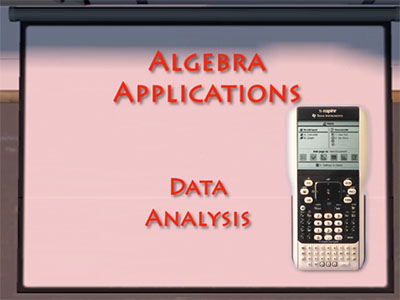
Display Title
Closed Captioned Video: Algebra Applications: Data Analysis
Display Title
Closed Captioned Video: Algebra Applications: Data Analysis
Topic
Data Analysis
Description
The video provides a comprehensive overview of the 2008 mortgage crisis, starting with an explanation of how mortgage defaults led to widespread economic repercussions, including a recession. It begins by outlining fundamental mortgage concepts like loan amount, interest rate, and repayment periods, introducing terms such as amortization and interest rate while highlighting the importance of understanding these concepts to grasp the financial instability caused by subprime loans. The video explains mortgages as long-term loans for purchasing homes, detailing their key components: loan amount, interest rate, and repayment periods. It demonstrates how interest rates significantly affect total loan costs and equity growth, using financial calculators to illustrate repayment schedules. Concepts like principal, interest, and equity are explored to show how small interest rate changes can lead to substantial savings. Focusing on subprime mortgages, the video highlights the impact of credit scores on loan interest rates. It contrasts repayment scenarios for borrowers with different FICO scores, demonstrating the financial burdens of subprime loans and their higher likelihood of default. Simulations showcase the broader economic impact of increased loan defaults. Finally, adjustable-rate mortgages (ARMs) are discussed, illustrating how variable rates can lead to higher long-term costs and financial risks. Spreadsheets show how payment changes over time exacerbate economic challenges, linking rising interest rates and declining home values to the crisis.
In this video, we explore the key concepts related to the topic of Data Analysis. This video is an excellent resource to deepen understanding and provide practical applications.
Teacher’s Script: Today we’ll be watching a video about Data Analysis. In this video, we will be looking at a comprehensive overview of the 2008 mortgage crisis, starting with an explanation of how mortgage defaults led to widespread economic repercussions, including a recession. It begins by outlining fundamental mortgage concepts like loan amount, interest rate, and repayment periods, introducing terms such as amortization and interest rate while highlighting the importance of understanding these concepts to grasp the financial instability caused by subprime loans. The video explains mortgages as long-term loans for purchasing homes, detailing their key components: loan amount, interest rate, and repayment periods. It demonstrates how interest rates significantly affect total loan costs and equity growth, using financial calculators to illustrate repayment schedules. Concepts like principal, interest, and equity are explored to show how small interest rate changes can lead to substantial savings. Focusing on subprime mortgages, the video highlights the impact of credit scores on loan interest rates. It contrasts repayment scenarios for borrowers with different FICO scores, demonstrating the financial burdens of subprime loans and their higher likelihood of default. Simulations showcase the broader economic impact of increased loan defaults. Finally, adjustable-rate mortgages (ARMs) are discussed, illustrating how variable rates can lead to higher long-term costs and financial risks. Spreadsheets show how payment changes over time exacerbate economic challenges, linking rising interest rates and declining home values to the crisis. As you watch the video, look for applications of Data Analysis.
For a complete collection of videos related to Data Analysis click on this link: Algebra Applications: Data Analysis Collection.
| Common Core Standards | CCSS.MATH.CONTENT.6.SP.B.5, CCSS.MATH.CONTENT.8.SP.A.1, CCSS.MATH.CONTENT.7.RP.A.1 |
|---|---|
| Duration | 30.85 minutes |
| Grade Range | 6 - 9 |
| Curriculum Nodes |
Algebra • Probability and Data Analysis • Data Analysis • Data Gathering |
| Copyright Year | 2020 |
| Keywords | algebra, data analysis, math of money, financial math, mortgage crisis, Closed Captioned Video, time value of money, loan, loans, mortgage |